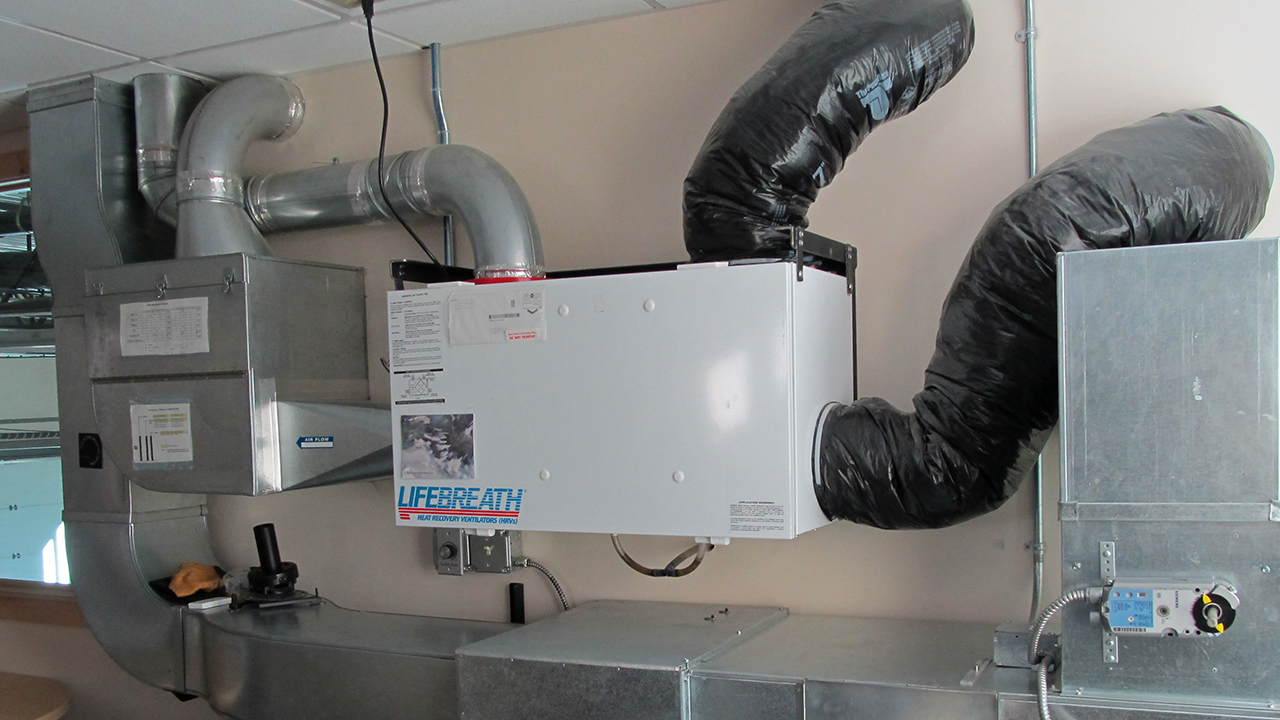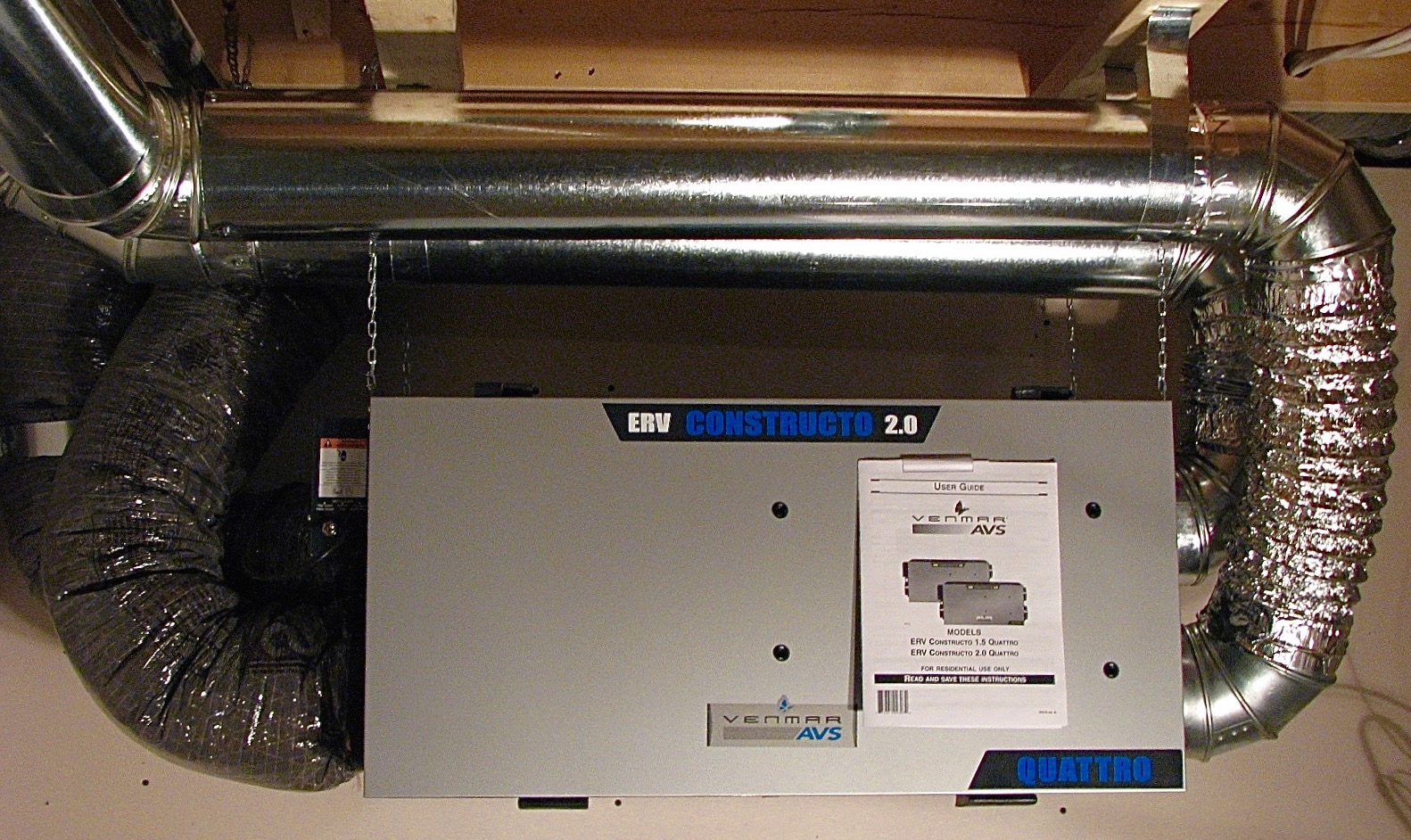A residential air-to-air heat exchanger can be a game changer when heating and cooling your home efficiently. This innovative technology allows heat transfer between the indoor and outdoor air, helping maintain a comfortable and consistent temperature while reducing energy costs. With various options available on the market, choosing the right heat exchanger for your home can be overwhelming. In this guide, we will break down everything you need to know about residential air to air heat exchangers, from how they work to the benefits they offer, to help you make an informed decision for your household.
Understanding the Basics
Before delving into residential air-to-air heat exchangers, it’s important to understand how they work. At its core, a heat exchanger is a device that transfers heat from one fluid or gas to another without them physically mixing. In the case of a residential air-to-air heat exchanger, heat transfer occurs between the indoor and outdoor air.
This process involves two main components: the supply and exhaust air streams. The supply air stream brings fresh outdoor air into your home, while the exhaust air stream expels stale indoor air. As these two air streams pass through the heat exchanger, heat from the exhaust air is transferred to the supply air, effectively preheating or precooling it.
Utilizing this heat transfer process, a residential air-to-air heat exchanger helps maintain a comfortable and consistent temperature in your home. Additionally, it reduces energy costs by minimizing the need for traditional heating and cooling methods.
Benefits of a Heat Recovery Air Exchanger for Your Home
A heat-recovery air exchanger can offer numerous benefits if you want to upgrade your home’s heating and cooling system. These systems help to improve indoor air quality by exchanging stale indoor air with fresh outdoor air. This constant airflow helps remove pollutants, allergens, and odors, ensuring that you and your family breathe clean and healthy air.
Another major advantage of a heat recovery air exchanger is its energy efficiency. By transferring heat between the indoor and outdoor air, these systems reduce the need for traditional heating and cooling methods, resulting in lower energy costs and a smaller carbon footprint. This is particularly beneficial when your home requires more heating or cooling during extreme weather conditions.
A heat-recovery air exchanger helps to maintain a consistent temperature throughout your home. By preheating or precooling the incoming fresh air, these systems prevent large temperature fluctuations and eliminate cold drafts, creating a more comfortable living environment.
Decoding the Differences: Heat Recovery Exchanger Vs Energy Recovery Ventilator
Regarding residential air-to-air heat exchangers, two popular options are the heat-recovery exchanger and the energy recovery ventilator. While they may sound similar, there are important differences between the two. As we discussed earlier, a heat recovery exchanger transfers heat between the indoor and outdoor air streams. It works by preheating or precooling the incoming fresh air using the heat from the exhaust air. This helps maintain a comfortable temperature in your home while reducing energy costs.
On the other hand, an energy recovery ventilator transfers heat and moisture between the air streams. This additional moisture transfer helps to regulate humidity levels in your home, improving indoor air quality and preventing issues such as mold and mildew. So, the main difference between these two systems lies in their ability to transfer moisture. While a heat-recovery exchanger focuses solely on heat transfer, an energy recovery ventilator offers the added benefit of humidity control.
Key Factors to Consider When Choosing Residential Heat Recovery Systems
Choosing the right residential heat recovery systems is crucial to maximizing the benefits of this innovative technology in your home. Here are some key factors to consider when making your decision:
- Efficiency: Look for a heat recovery system with a high-efficiency rating. This will ensure it effectively transfers heat between the air streams, minimizing energy waste and reducing utility bills.
- Airflow Capacity: Consider the size and layout of your home when choosing a heat recovery system. Ensure it has sufficient airflow capacity to adequately ventilate all areas of your house and maintain a comfortable temperature throughout.
- Noise Level: Some heat recovery systems, especially with high fan speeds, can be noisy. Look for models with sound insulation or low noise ratings to ensure a peaceful and quiet environment in your home.
- Maintenance Requirements: Consider the maintenance requirements of the heat recovery system you choose. Look for systems that have easily accessible filters that can be cleaned or replaced regularly to ensure optimal performance and indoor air quality.
Maintaining Indoor Air Quality with a Residential Energy Recovery Ventilator
A residential energy-recovery ventilator (ERV) is crucial in maintaining excellent indoor air quality. This innovative system not only helps exchange stale indoor air with fresh outdoor air but also effectively filters out pollutants and allergens, ensuring that you and your family breathe clean and healthy air. Regular maintenance is the key to maintaining optimal indoor air quality with a residential energy recovery ventilator.
It is essential to clean or replace your system’s filters as the manufacturer recommends. This will prevent the buildup of dust, pollen, and other particles that can diminish the system’s efficiency and impact the air quality. Scheduling routine professional maintenance for your residential ERV is highly recommended. A professional technician can inspect and clean the entire system, ensuring it operates at peak performance and effectively removes contaminants from the air.
Maximizing Comfort with a Home Air Heat Exchanger
A residential air-to-air heat exchanger is your secret weapon when maximizing comfort in your home. These innovative systems help maintain a consistent temperature and eliminate pesky cold drafts that can make your living environment uncomfortable. By preheating or precooling the incoming fresh air, a home air heat-exchanger ensures that you and your family stay cozy and cozy all year round. Say goodbye to fluctuating temperatures and hello to ultimate comfort.
With a home air heat exchanger, you can say goodbye to those annoying hot or cold spots in your home. The heat transfer process ensures the temperature remains balanced throughout, eliminating any discomfort caused by drastic temperature differences. But it doesn’t stop there. A home air heat-exchanger also helps to reduce humidity levels in your home. By effectively ventilating your space, it helps prevent mold and mildew growth, creating a healthier and more comfortable living environment for you and your family.
The Role of a Residential Heat Recovery Ventilator in Energy Efficiency
When maximizing energy efficiency in your home, a residential heat-recovery ventilator (HRV) plays a crucial role. These innovative systems help maintain a comfortable temperature and minimize energy waste, resulting in lower utility bills and a reduced carbon footprint. The key to the HRV’s energy efficiency lies in its ability to transfer heat between the indoor and outdoor air streams.
By recovering the heat from the exhaust air and using it to preheat the incoming fresh air, the residential heat recovery ventilator minimizes the need for traditional heating methods. This process helps to reduce energy consumption and, ultimately, saves you money. In addition to heat recovery, the HRV aids energy efficiency by promoting proper ventilation. Continuously exchanging stale indoor air with fresh outdoor air prevents the buildup of pollutants and allergens, ensuring a healthy and comfortable living environment.
Maintenance and Care Tips for Residential Energy-Recovery Ventilator
Proper maintenance and care are essential for ensuring the optimal performance and longevity of your residential energy-recovery ventilator (ERV). Here are some important tips to keep in mind:
Regular Filter Cleaning or Replacement:
The filters in your ERV capture dust, pollen, and other particles from incoming and outgoing air. It’s important to clean or replace these filters as the manufacturer recommends to maintain efficient airflow and indoor air quality.
Check and Clean the Ventilation Ducts:
Over time, dirt, debris, and even mold can accumulate in the ventilation ducts of your ERV. Regularly inspect and clean these ducts to ensure optimal air circulation and prevent potential blockages.
Schedule Professional Maintenance:
While homeowners can do regular filter and duct cleaning, scheduling routine professional maintenance for your ERV is also important. A qualified technician can thoroughly inspect and clean the internal components, ensuring optimal performance and efficiency.
Monitor and Control Humidity Levels:
Excess moisture can impact the effectiveness of your ERV and potentially lead to mold or mildew growth. Monitor and control humidity levels in your home using a hygrometer, and consider using a dehumidifier if needed.
Common Misconceptions about Residential Air-To-Air Heat Exchangers
Residential air-to-air heat exchangers have gained popularity in recent years, but some things need to be clarified surrounding this innovative technology. Let’s debunk a few of these common myths.
Misconception 1: Heat exchangers are only beneficial in cold climates.
Reality: While it’s true that heat exchangers excel in cold climates by preheating incoming air, they also offer significant benefits in warm climates. By precooling the air, they reduce the strain on air conditioning systems, resulting in energy savings and improved comfort.
 Misconception 2: Heat exchangers require complicated installation and maintenance.
Misconception 2: Heat exchangers require complicated installation and maintenance.
Reality: While professional installation is recommended, modern heat exchangers are designed to be user-friendly. They often come with easy-to-use controls and accessible filters that homeowners can clean or replace. Regular maintenance is straightforward and ensures optimal performance.
Misconception 3: Heat exchangers only provide fresh air, not heat or cooling.
Reality: Heat exchangers transfer heat and cooling, allowing year-round comfort. They preheat or precool the incoming air, reducing the need for traditional heating or cooling methods. This results in energy savings and a more consistent indoor temperature.
Misconception 4: Heat exchangers create drafts in the home.
Reality: Heat exchangers are designed to prevent drafts. Transferring heat between the air streams maintains a balanced temperature throughout the home. This eliminates hot or cold spots and ensures a comfortable living environment.
FAQ’s
1. How do I know if a residential air to air heat exchanger is right for my home?
Choosing the right residential air to air heat exchanger for your home depends on your climate, energy efficiency goals, and specific needs. It’s best to consult a professional HVAC technician who can assess your home’s heating and cooling requirements and recommend the most suitable heat exchanger.
2. Can a heat recovery air-exchanger be installed in any home?
Yes, heat recovery air-exchangers can be installed in various homes, including single-family houses, apartments, and townhouses. However, the specific installation requirements may vary based on the size and layout of your home. It’s important to consult with an experienced HVAC professional for accurate installation guidance.
3. How often should I clean or replace the filters in my heat recovery system?
The frequency of filter cleaning or replacement depends on factors such as the level of pollutants in your area and the manufacturer’s recommendations. Generally, checking and cleaning the filters every three to six months is recommended. However, it’s best to refer to the specific instructions provided by the manufacturer for your heat recovery system.
4. Are heat recovery air-exchangers noisy?
Most modern heat recovery air-exchangers are designed to operate quietly. However, the noise level can vary depending on the model and fan speed. It’s recommended to look for systems with low noise ratings or sound insulation to ensure a peaceful and quiet living environment.
Conclusion
Choosing the right residential air-to-air heat exchanger can be daunting, but fear not! We’re here to guide you through the process. When selecting a heat exchanger for your home, it’s important to consider factors such as efficiency, airflow capacity, noise level, and maintenance requirements. By considering these factors, you can ensure that you choose the right heat exchanger to keep your home comfortable and energy-efficient. So, buckle up, and let’s dive into the world of residential air-to-air heat exchangers!



